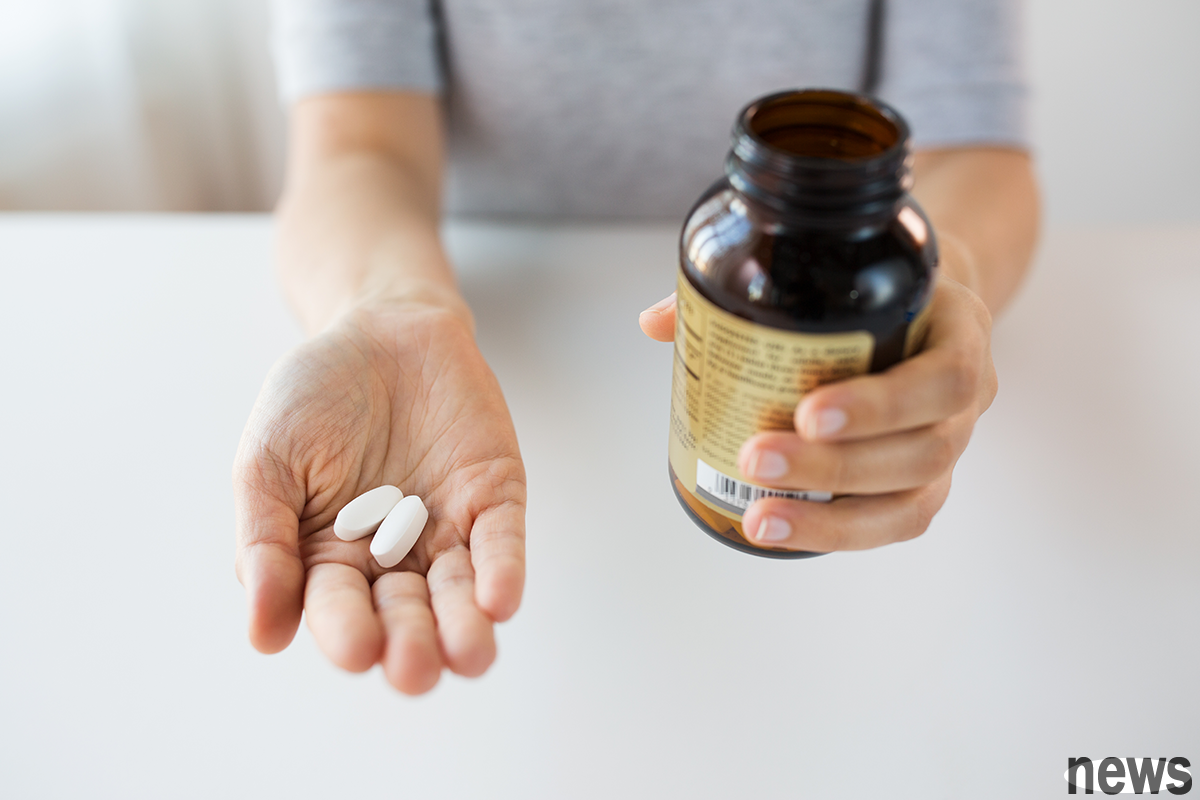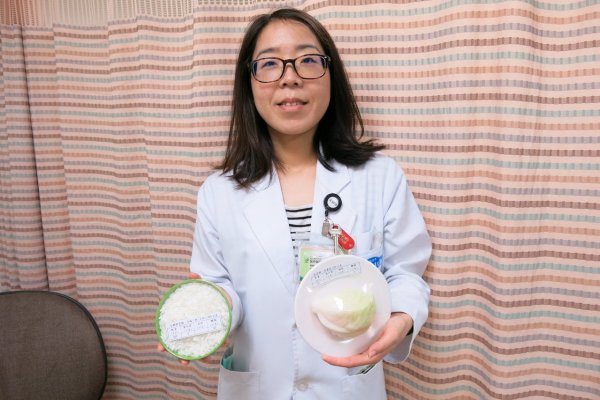Vitamin D not only protects bones, but also fights cancer? Should I replenish it?

Vitamin D is a group of fat-soluble vitamins, an important nutrient for maintaining the normal growth and health of human bones, muscles and other groups. Vitamin D includes vitamin D2 to D7, where D2 and D3 are the main vitamin D in the human body.
Because humans can irradiate the skin by yang ultraviolet UVB (medium wavelength, wavelength 280-320 nanometers), producing vitamin D3, so vitamin D is also known as "sun vitamin". In addition to the sunlight that can produce vitamin D3, vitamin D2 can be taken from plant-based foods and vitamin D3 can be taken from animal-based foods. The conversion usage rate in humans is better than D3 than D2, and the activity of D3 is about 10 times that of D2.
Vitamin D The vitamin D3 produced by irradiation of sunlight on the skin, as well as D2 and D3 from diet and nutrition supplements, are circulated from the blood to the liver and transformed into active states in the kidneys. When the "calcium" in the body is insufficient, the calcium can be used to absorb enough calcium through food. Vitamin D will increase the absorption of calcium by the kidneys, and at the same time reduce the excretion of calcium by the kidneys, maintain the balance and stability of calcium by the blood, and maintain the healthy bones. However, when the body is insufficient and does not take enough calcines from food, vitamin D will act on the bones, calcines from the bones to maintain the balance of calcines in the blood. To put it simply, vitamin D is the key control of maintaining the blood quality of the body.
On the other hand, vitamin D is also a hormone with multiple physiological effects. Traditionally, vitamin D is combined with the function of the parathyroid gland and is regulated by calcium, phosphorus, parathyroid hormone, vitamin cell growth factors and other factors to maintain the balance of calcium and phosphorus in the human body and maintain bone health. However, recent studies have also found that vitamin D also has its functions in protecting non-skeletal aspects, such as the protection of the kidneys, brain, glands, brain, pancreas, cardiovascular, as well as the regulation of immune function and cancer prevention, because the above organs also have the receptors of vitamin D.
Too much or insufficient can affect health. The general lack of the "Survey on the Changes of Nursing Health" published by the Ministry of Health and Welfare in 2009, and found that up to 66% of the people lack vitamin D (<20 ng/mL), and only 1.9% of the people have sufficient vitamin D (>33 ng/mL). If gender is considered, 70% of women and 60% of men lack vitamin D. It is judged that it is related to the general lack of Chinese people, or their preference for wearing long-sleeved clothing, hats, and sunblocks.
To evaluate the status of vitamin D in the body, you can go to a hospital, clinic or examination to test 25(OH)D, because 25(OH)D is the main form of vitamin D in the human cycle.
Too much or insufficient vitamin D can affect health. Too often, it will cause side effects such as nausea, vomiting, headache, fatigue, abnormal thirst, eye inflammation, skin, and joint pain. If it is insufficient, it will cause bone looseness and fractures.
It is recommended that adults consume 200 IU
According to the seventh edition of the "National Nutrition Reference Intake" issued by the Ministry of Health and Welfare Department of the Republic of China in the 100th year, it is recommended that adults aged 18 to 50 be given a daily dose of 200 IU, and it is recommended that adults over 51 should double to 400 IU. As for pregnant women and breastfeeding mothers, they should consume 600 IU to be sufficient.
However, for high-risk groups with vitamin D deficiency, such as osteosis, osteoporosis, elderly, and chronic kidney disease, it is recommended that the dose of the dose be increased. 600-1000 IU can be taken from 1 to 18 years old, and 1500-2000 IU above the age of 19. In most cases, it is unanimously believed that the daily intake should be less than 2000 IU.
Sun Sun The UVB in the sun has the ability to stimulate the human skin to synthesize vitamin D, but UVA (long wavelength, wavelength 320-400 nanometers) has little effect on the synthesis of vitamin D. Generally speaking, 90% of vitamin D in the human body can be naturally synthesized by receiving UVB ultraviolet light when the skin is irradiated with the sun. Normal people spend 10 minutes a day, and vitamin D taken from natural foods should be enough. Unless it is a high-risk group for vitamin D deficiency, vitamin D supplements are not necessarily required. If the vitamin D in the body is really low by blood test, you can still consider taking 600 to 1,000 IU supplements a day.
The sunlight, only 10 minutes a day, will help synthesis of vitamin D in the body. However, the vitamin D concentration in the human body will stop rising after a period of time, so there is no need for the sun that will last longer to increase the vitamin D concentration in the body. It is usually recommended to silence the sun between 10 am and 3 pm. If you want to silence the sun in the early morning or dusk, the time should be extended to 30 minutes before it can be sufficient.
When you are in the sun, as long as you have the arms, thighs, and calves, you can apply sunscreen and wear a hat on the face that everyone cares about. In addition, when you are active under the sun, your arms and legs can be washed for 10 minutes before applying anti-smooth breasts, which can produce vitamin D in your body, and also prevent sunlight..
In the current study, it has been found that anti-smooth milk will indeed reduce the synthesis of vitamin D3, because anti-smooth milk removes the UVB that stimulates the human skin to synthesize vitamin D keys, which will block 95% of the synthesis of vitamin D. On the other hand, even if you sit indoors and sunlight through the glass, you cannot help the body synthesize vitamin D. Because glass blocks the medium-wavelength UVB, only long-wavelength UVA can penetrate, so the sunlight through the glass will only turn black, and it cannot help the body synthesize vitamin D.
Vitamin D adds calcines. To strengthen the bone
calcines, the quality of calcines must be combined with vitamin D to be absorbed by humans. In particular, research has found that vitamin D can increase the absorption rate of calcines by 60%.
According to the recommendations of the National Health and Health Department of the Ministry of Health and Welfare, adults over 19 years old (including silver hair) recommend 1,000 mg of calcium every day, but Chinese people generally only get 350 to 400 mg of calcium every day, and 80% of adults in Taiwan lack calcium. It is currently known that the rate of bone loss in humans after the age of 35 will gradually be greater than the rate of bone production, so it is very important to start storing bones at a young age.
The absorption rate of calcines is also different at different ages. For example, children's absorption rate is as high as 60%, but adults only have 20 to 40%. When they are old, they will still reduce at a rate of 0.2% per year. Therefore, in addition to replenishing calcines, focusing on sunlight and consuming vitamin D from natural diets is also helpful for "bone-keeping".
For cancer cells, vitamin D has an anti-proliferative effectGenerally speaking, there are vitamin D receptors (simple VDRs) among cells that produce cancer, such as skin, breast tissue, protective glands and epithelial cells of the large kidneys. Vitamin D can produce anti-cancer effects through the vitamin D receptor. It is currently known that for cancer cells, vitamin D has anti-proliferative effects, such as stopping the cell cycle of cancer cells, inhibiting angiogenesis, anti-inflammatory, promoting differentiation, and promoting cell apoptosis. At the same time, it also has the effect of repairing DNA, which can help prevent and improve cancer.
In addition, vitamin D is fat-soluble and should still be avoided for long-term overdose. If you are a person who prepares Vitamin D supplements for final use, it is recommended that the daily preventive health supplement should not exceed 2,000 IU (if there is a treatment purpose, the dosage of the doctor is instructed).
The symptoms of vitamin D poisoning are abnormal thirst, eye development, skin scratching, diet, drowsiness, vomiting, abdomen, frequent urine, and blood calcification will cause abnormal depression in the blood vessel wall, liver, lungs, kidneys, and stomach, and may also cause pain, diffuse bone mineralization and other symptoms.
So, 10 minutes a day is still the most natural and safest way to replenish vitamin D. In addition, it can also be taken from food. Animal foods contain more vitamin D, such as fish rich in oil, lean meat, egg yellow, animal liver, milk products, etc., while plant foods such as black fungus, mushrooms, and yeast also contain rich vitamin D.
[This article is reproduced from the National Health Foundation Haohealth Magazine Issue 46 (Published on 2018-10-15, original text link])




